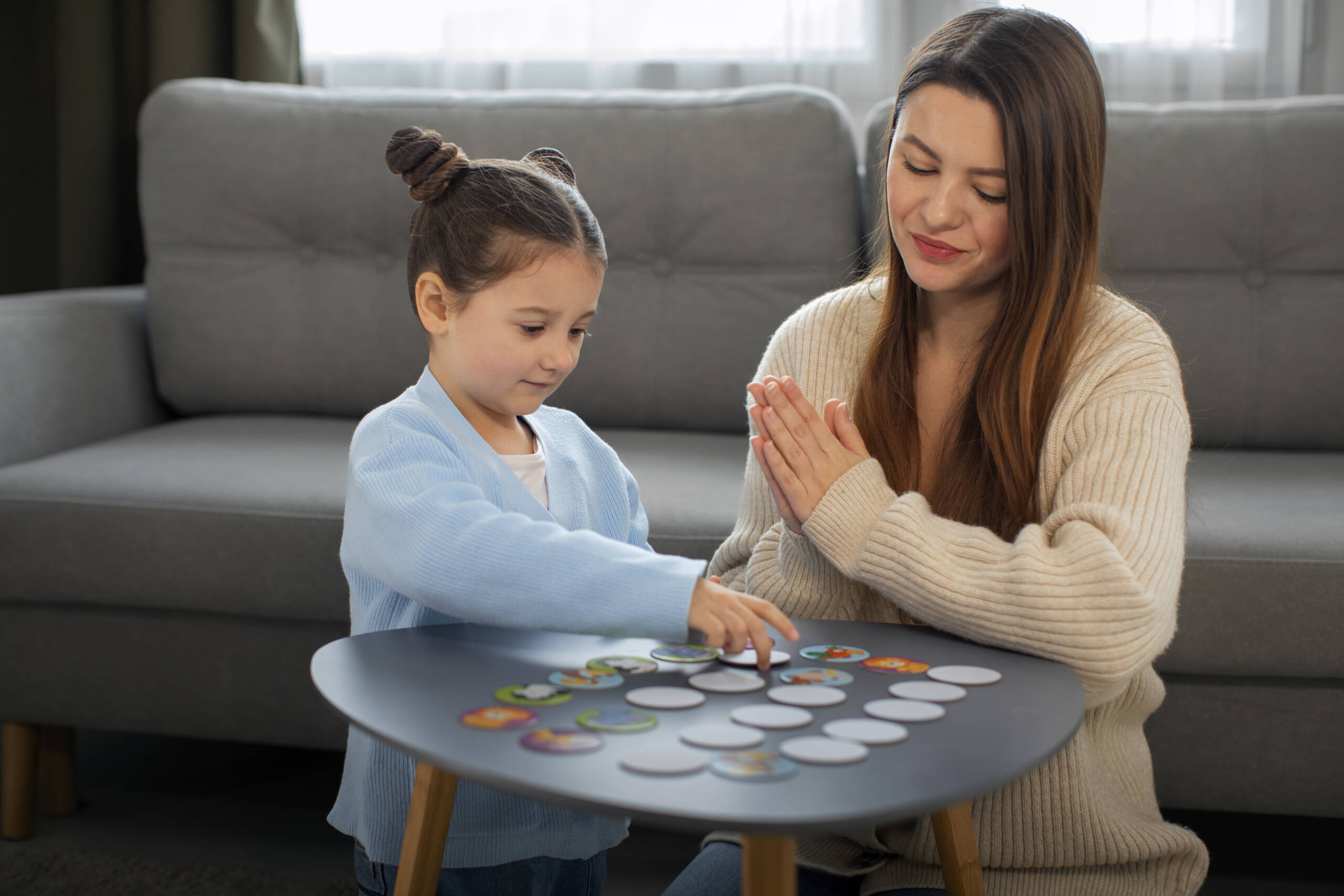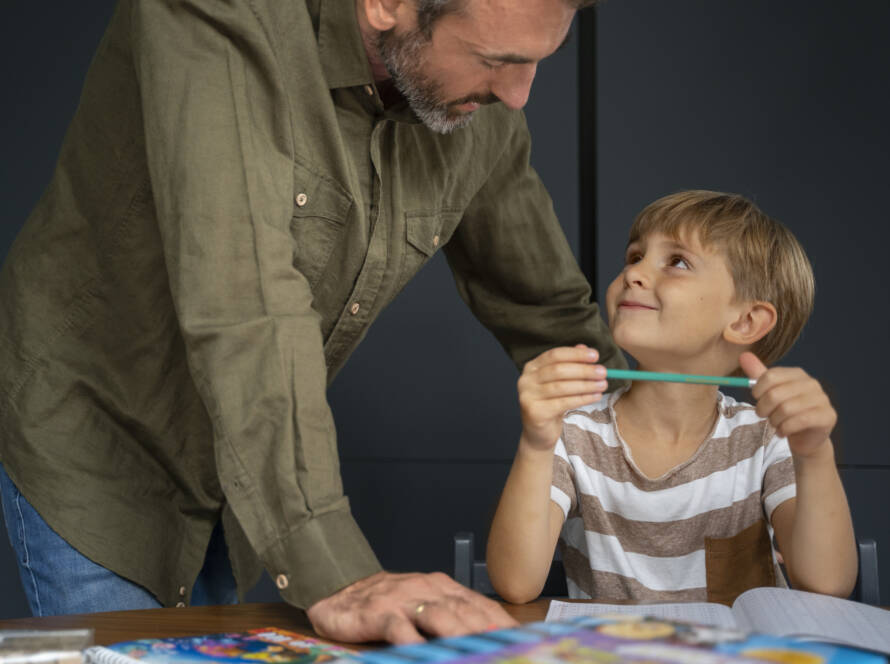When 6-year-old Krisha came home from school in tears, her mother, Meera, got concerned and asked what had happened. Krisha explained that her best friend had refused to share a toy and said, “You’re not my friend anymore.”
Instead of brushing it off, Meera sat down with her and said, “That must’vehurt.Try thinking about why your friend must have said that? Was she upset or having a hard day too?” Meera wasn’t just comforting her child, she was planting the seeds of empathy.
As parents, we often wish we could wrap our children in a protective bubble. But more than shielding them, what truly prepares them for the world is teaching them to walk through it with empathy. Empathy doesn’t always come naturally. It’s a skill that grows when nurtured, practised, and modelled.
In this blog, we’ll walk you through simple, everyday ways to help your child develop this quiet strength.
Start by defining Empathy
Defining empathy is the first step towards self-awareness. There are two kinds of empathy.
When someone is upset, we get upset too. When someone smiles, we instinctively smile back. That’s Affective empathy. It is something we are all born with. This is how we naturally react to another person’s expression of emotion. We all have affective empathy, though not in equal amounts.
Cognitive empathy, on the other hand, is the deliberate attempt to feel how another person feels. This is the type we can instil in our children.
Label your children’s emotions.
To empathise, children must first understand their own. Then they will be able to understand other people’s emotions. Labelling our children’s emotions is one of the earliest ways we can teach them empathy. We must provide them with the language to express their emotions.
Model Empathy
Children are incredible observers. When your child sees you thank the delivery person warmly or express concern for a sick neighbour, you are showing them what it means to care. Before they understand what empathy means, they watch it in action.
One of the most effective ways to teach children empathy is to respond to them with empathy. When we consistently respond to our children with warmth and empathy, they will accept it as normal. When they see it in action, feel it, and experience it firsthand, they will be better able to understand it and pass it on to others.
Use Storytelling or Books to Build Emotional Understanding
Stories are one of the oldest and most effective ways to help children understand emotions. Stories help us to see the world through someone else’s eyes. Storytelling helps children process and make sense of their experiences.
Help your children understand why characters are feeling a particular emotion and how they know they are feeling it. Then encourage your child to consider how they would react if they were in a similar situation.
After reading a book together, pause and ask:
- “How do you think that character felt?”
- “What would you have done if you were in their place?”
- “Why do you think they acted that way?”
Stop making it easier for your child
Many children have never experienced a major problem, so they don’t understand what others do and don’t know how to respond empathetically. As parents, we need to step back and let our children face challenges. Allow them to experience disappointment and failure. Let them deal with the conflict. You can still coach them from the sidelines, but let them live an imperfect life to teach them empathy.
Nurture Empathy Through Peer and Sibling Relationships
Relationships with siblings offer a unique and natural space for empathy to flourish. Unlike parent-child dynamics, which can carry an imbalance of power and emotional dependence, peer and sibling interactions are more equitable. Children learn to negotiate, share, set boundaries, and understand perspectives.
While a child may sometimes suppress their emotions or needs to gain a parent’s approval, this isn’t the case with peers or siblings. These relationships are less about survival and more about mutual understanding and interdependence. That’s why they present rich, real-time opportunities for empathy-building.
Empathy through Boundaries
Teaching children empathy means teaching them about boundaries, both their own and those of others. We want children to be respectful of others’ emotions and boundaries. We also want them to understand that being empathetic does not imply ignoring their own needs or allowing others to cross their boundaries.
We can teach children about boundaries early on by setting limits on their behaviour and teaching them what to do when someone is disrespectful of them or their emotions. This involves respecting their boundaries and allowing them to say no when they are uncomfortable with something. And it also means speaking up for them when we see others not being respectful of their feelings, especially when they are
Acts of Kindness
Empathy becomes more real to children when they have opportunities to express it in their actions. Small gestures, holding the door open, offering a toy, or checking in on someone are simple yet powerful ways to help kids connect with the feelings of others.
One fun and meaningful way to build this habit is through the Kindness Jar Challenge.
The Kindness Jar Challenge
Place a jar somewhere visible, your kitchen counter, the dining table, or your child’s study area. Keep small slips of paper and a pen nearby. Every time your child does something kind or thoughtful, write it down and drop it into the jar.
Some examples might include:
- “You helped your sister without being asked.”
- “You made a card for Grandma when she wasn’t feeling well.”
- “You asked your friend if they were okay when they looked upset.”
At the end of each week, sit down as a family and read the slips together. Reflect not only on what your child did, but also why they did it. These weekly reflections help children recognize the ripple effect of their empathy-driven actions. Over time, they begin to seek out more of those moments, not for praise, but from genuine care. Empathy becomes more concrete when children can act on it.
Teaching empathy to kids is a long, patient journey woven into daily life through stories, conversations, play, and love. Your child might not always get it right. But with your gentle guidance, they’ll slowly begin to see the world not just through their own eyes, but through the hearts of others, too.



